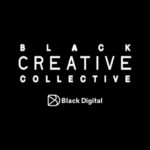There was a time in global marketing when the one-size-fits-all approach was the most popular strategy, but the easy marketing days are over, and 2024 is the era of personalization.
A one-size-fits-all approach to branding will not only be obsolete in 2024 but also a master plan for failure for companies of all sizes. When we say personalization, we mean that every consumer segment is an audience on its own and wants to receive a message that connects and resonates with not just their language and values but also their culture to ensure trust and loyalty between the consumer and the brand.
This is the easiest way to understand a multicultural strategy and its relevance to brand success today.
Understanding Multicultural Marketing
A marketing newbie might think of Multicultural marketing as translating your campaigns into different languages to improve their reach to people of multiple cultures, but actually, it’s something much more complex and nuanced. To understand Multicultural marketing, let’s start by understanding what it aims to achieve by tapping into the mosaic of cultures, traditions, and values that are the foundations of a diverse consumer group. For marketers who aim to develop a genuine connection and foster brand loyalty across their varied demographics, understanding and adopting the principles of a multicultural marketing strategy is essential.
The aim behind a multicultural marketing strategy should be to recognize the respective cultures, which should be greater than just creating a relationship and resonance with the ethnic groups. For example, what Bumble’s “Find Me on Bumble” campaign did, through highlighting and celebrating some inspiring and diverse users in the New York City area.
Strategic Foundations of Multicultural Marketing
Through Multicultural marketing, the brand’s aim should be to design and execute a marketing campaign aimed at multicultural communities and ethnically mixed people. For example: America is a “melting pot” for an ethnically mixed population of diverse groups with various ethnic, social, cultural, and religious backgrounds.
Best Practices for Developing a Multicultural Marketing Strategy
In Multicultural Marketing Strategy, you should begin by knowing DEI—diversity, equity, and inclusion. Then, accordingly, tailor your marketing content, add visuals, and use catchy headlines to project the preferences and values of the multicultural audience. Your brand must recognize the target audience’s cultural traditions, customs, language, and religion in your Multicultural marketing campaign strategy to build an authentic connection with your multicultural consumers.
Understanding Your Audience
You want to hunt for the best Multicultural Marketing Strategy—keep your target audience in the spotlight. Recognizing your target audience in multicultural marketing requires a mix of research, data analytics, and an understanding of the culture.
Let’s know these step-by-step:
- Market Research: Do detailed research and make a connecting link within your target market via demographics. Do census data analysis, and make reports on demographic and consumer surveys to understand the ethnic and cultural variety and richness of the target audience. Next, use data analytics tools; it will give you information on consumer behavior, consumer engagement trends, and purchase patterns. This is data-driven, and it’s recommended to know market trends and opportunities when targeting multicultural consumers.
- Cultural Segmentation: You should know your target audience based on cultural factors such as ethnicity, language, religion, food, ancestry, and cultural values. Next, you can do the Customer Profiling based on demographics, psychographics, behaviors, preferences, and purchasing habits specific to each cultural group. These factors can contribute to coming up with a marketing mix. For example: 70% of Gen Z consumers are more trusting of brands representing diversity in advertising.
- Social Listening: As a brand, you should know the demands and interests of your multicultural consumers, and in 2024 the pathway is social media platforms, online forums, and community groups. Become their voice to show their preferences and behaviors to the world. Next, your brand can conduct surveys, do focus group discussions with ethnic groups, and interview people from different cultural communities to gather direct feedback and insights. Show this to the world, and make video recordings so your audience knows YOU CARE!!!!
- Competitor Analysis: A Competitor Data Analysis can tell you their secret recipe for targeting and influencing engagement with diverse audiences. The best part is your brand can learn from its successes and failures, so avoid those in the future. For example, there is a rivalry between Coca-Cola and Pepsi. They regularly monitor each other’s pricing and promotional strategies and adjust their prices to stay competitive.
- Consultancy with Cultural Experts: I personally recommend that you consult cultural experts, as they provide valuable insights and guidance on how to effectively reach and resonate with multicultural audiences. Otherwise, if you don’t have someone on your team who can contextualize your marketing campaign to a specific ethnicity or culture, your content might seem like it was created without any specific target audience.
- Testing and Feedback: Trust that Testing and consumer feedback can help your brand refine your targeting Multicultural Marketing strategies as it creates performance data. Experiment with different messaging, channels, and tactics to identify what resonates most with each cultural group.
Crafting Your Message
Do you know that 95 percent of purchasing decisions take place in the subconscious mind? When your communication creates an emotional connection, you’re definitely #winning with your multicultural buyers. In a digital age, where consumers see thousands of ads daily, an emotional bond is critical. It not only influences their purchasing decisions but also gives consumers long-term loyalty. When you relate to their preferences, you become relevant.
Choosing the Right Channels
As a marketing head, if you ask what that one tool is, you must not underestimate it in multicultural marketing strategy – it’s what and how to reach your target audience. The answer is simple: First, Know Your Audience based on demographics, preferences, and consuming behaviors. Then check out details like age, ethnicity, language, socio-economic status, and media consumption habits. For example: Develop laser-focus based on the age bracket of your target audience, like millennials, Gen-Z, etc. The following stats can give you the surface idea:
What is the most used social media by age? 18-29 years – Snapchat (41%), TikTok (35%), Instagram (32%) 30-39 years – LinkedIn (34%), X/Twitter (34%), Snapchat (33%), Instagram (32%) 40-49 years – LinkedIn (25%), Facebook (22%), X/Twitter (21%) 50-59 years – Facebook (29%), LinkedIn (24%), Pinterest (24%)
Next, review competitor websites and social channels. These are GREAT indicators for knowing digital and traditional media when devising a multicultural marketing strategy for your brand. If your budget allows it, how about you take advantage of social media influencers? This has no limit. For example, if Zayn Malik endorses your brand to influence purchases among South Asian Americans, it will be a sales boom as it will create a domino effect from the American minority to the white majority.
Partnership with Multicultural Marketing Agencies
It involves teamwork when I talk about knowing your audience or spying on your competitors’ trends. You have to have a solid team, their training, and more. This stuff can be made easier if your brand enters a Partnership with Multicultural Marketing Agencies for profitable results. It’s like ordering food online; any hour of the day, your choice, just a different recipe, hence a better taste to expect. They know it, so will Deliver it! Highly recommended!!! But, of course, your company’s marketing budget is the deciding factor here.
Executing and Managing Your Campaign
The end goal of a successful Multicultural Marketing Strategy should be to create and enhance Brand Loyalty. If your multicultural marketing strategy aims to foster the cultural understanding of the target audience for the majority, it enhances a sense of inclusion among them, and you will attract consumers who are loyal. Why?
Because the consumers feel seen and heard – hence valued.
Evaluating Success
The metrics to evaluate your Multicultural Marketing Strategy’s success include: How is your brand’s overall impression, what is the Lead generation response rate, and Return on investment (ROI). Finally, Stay consistent, track results, and adjust tactics as needed. Go for Key Performance Indicators (KPIs)
- Customer acquisition rate
- Campaign reach
- Engagement rate
- Conversion rate
- Customer retention
- Return on investment
- Brand perception
One of the best ways to evaluate your success in Multicultural Marketing Strategy is to learn from “Diversity Marketing Examples.” Nike has long excelled in diverse advertising, showcased by the Nike Pro Hijab for Muslim female athletes, adaptive activewear for people with disabilities, and plus-size athletic wear.
Final Word on Multicultural Marketing Strategies
If you want to tie up your multicultural marketing strategy into one box, get clear that it should be authentic and true in representing your brand message. Trust me when I say concocting a specific narrative is obsolete, as staying polar will not let you excel in this arena. Look at Bumble’s app campaign on “Find Me on Bumble”. Rather than relying on mere story narration, they celebrated their users’ real yet diverse lives in New York City to highlight the diversity within their community. This approach showcased their commitment to inclusivity and demonstrated how a brand can leverage its existing diversity as a formidable asset.
As you venture into multicultural marketing, remember it’s not about fitting into a pre-defined strategy or model. It’s about tuning into the real, varied preferences of the people on your platform. When you align your marketing efforts with the authentic experiences and needs of your audience, you don’t just market to them; you connect with them. In today’s world, that connection is what makes a brand not just seen but truly valued and embraced.





